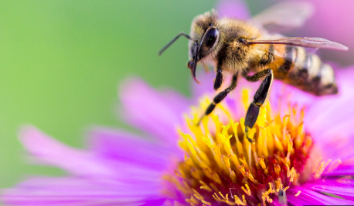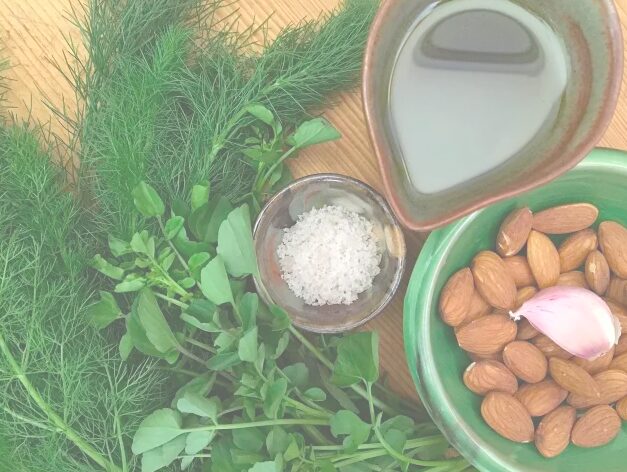From the moment I first stepped into a forest as a child, I knew I was destined for a life intertwined with nature’s mysteries. My parents often joked that I was more plant than human, as I spent countless hours exploring the woods, collecting leaves, and observing the intricate dance of life around me. Little did they know, these early adventures were laying the foundation for a lifelong passion that would transform not only my life but the lives of many others.
As I grew, my fascination with the natural world blossomed into an insatiable hunger for knowledge. I dove headfirst into the realms of naturopathy, homeopathy, Ayurveda, herbology, and gardening, each discipline adding a new layer to my understanding of the world. But it was the discovery of the soil food web that truly ignited my imagination. Suddenly, I saw the world through a microscopic lens, revealing a universe of microbes that held the key to unlocking nature’s most profound secrets.
My journey as an organic gardener took on new meaning as I began to understand the intricate relationships between soil health and human wellness. I realized that by mimicking nature’s processes, I could create a harmonious ecosystem that nurtured both plants and people. This epiphany sparked a revolution in my kitchen, transforming it from a simple cooking space into a laboratory of culinary alchemy.
When I moved to rural Central Ontario to build my homestead, I faced the daunting task of creating a self-sufficient life from scratch. With limited resources but boundless determination, I cleared land, built gardens, and learned to harness the bounty of the earth. The short growing season presented a challenge, but it also sparked my creativity. I dove into the world of food preservation and fermentation, turning my kitchen into a hub of experimentation and discovery.
Hours were spent canning, freezing, and dehydrating, each mistake a valuable lesson learned. I reveled in the alchemy of transformation, watching as salt, time, and beneficial microbes turned humble vegetables into tangy sauerkraut, crunchy pickles, and effervescent kombucha. With each batch, I tasted not just the flavors but the essence of the land and the magic of microbial transformation.
As my understanding of fermentation deepened, I began to see parallels between the microscopic world of soil and the transformative processes happening in my jars and crocks. The same principles of diversity, balance, and symbiosis that governed soil health were at play in my kitchen creations. This realization opened up a whole new world of possibilities, inspiring me to develop innovative recipes that celebrated the interconnectedness of all living systems.
My passion for kitchen alchemy grew as I discovered the medicinal properties of fermented foods. Kimchi, kefir, and other probiotic-rich creations became not just delicious additions to meals but potent allies in supporting gut health and boosting immunity. I marveled at how simple ingredients, when treated with care and knowledge, could be transformed into powerful medicines.
Even after moving to the lush, year-round growing climate of Southern Ecuador, my love for preservation and fermentation remained strong. I found joy in capturing the essence of each season, creating herbal tinctures, infused oils, and medicinal syrups that concentrated nature’s healing power into easily accessible forms.
Today, I wear the dual hats of microbe farmer and kitchen alchemist with pride. My kitchen is more than just a place to prepare meals; it’s a sacred space where the boundaries between food and medicine blur. Here, I continue to experiment, innovate, and create, turning the gifts of the earth into nourishing, healing preparations that celebrate the beauty and diversity of nature.
In today’s fast-paced world, where processed foods and quick fixes dominate our diets, the art of kitchen alchemy has never been more crucial. This ancient practice of transforming simple ingredients into nourishing, healing foods is not just about culinary creativity; it’s about reclaiming our health and reconnecting with the natural world. By learning to harness the power of fermentation, preservation, and herbal medicine-making, we can take control of our well-being, reduce our reliance on industrial food systems, and cultivate a deeper appreciation for the bounty of the earth. This knowledge empowers us to become active participants in our own health journey, rather than passive consumers of mass-produced products.
Moreover, kitchen alchemy serves as a bridge between traditional wisdom and modern science, offering solutions to many of the health challenges we face today. As we grapple with issues like antibiotic resistance, chronic inflammation, and gut health imbalances, the probiotic-rich foods and herbal remedies created through kitchen alchemy provide natural, holistic alternatives. By embracing these practices, we not only nourish our bodies but also preserve valuable cultural knowledge and support biodiversity in our food systems. In a world increasingly disconnected from nature, kitchen alchemy offers a path back to harmony with the earth and our own bodies, fostering resilience, self-reliance, and a profound sense of connection to the cycles of life.
As I reflect on my journey from curious child to passionate practitioner, I’m filled with gratitude for every lesson learned, every mistake made, and every moment of wonder experienced. My path has been winding, but it has led me to a place of deep connection with the natural world and a profound understanding of the healing power of food.
In sharing my knowledge and experiences through teaching and writing, I hope to inspire others to embark on their own journeys of discovery. I want to show that the art of kitchen alchemy is accessible to all, that with curiosity, patience, and a willingness to learn, anyone can transform their kitchen into a hub of healing and transformation.
For me, culinary alchemy is more than just cooking; it’s a form of magic that turns the ordinary into the extraordinary. It’s about seeing the potential in every ingredient, understanding the subtle interplay of flavors and nutrients, and crafting dishes that nourish both body and soul. In my world, a pinch of salt is a catalyst for transformation, a dash of herbs is an invocation of nature’s healing power, and every meal is an opportunity for spiritual and physical nourishment.
As I continue on this path, I remain ever curious, ever learning, and ever in awe of the miraculous transformations that happen in my kitchen every day. Through my work, I hope to share not just recipes and techniques, but a way of seeing the world – one where every meal is an act of alchemy, every ingredient a potential medicine, and every kitchen a place of magic and healing.
Here are two recipes that I love creating from the garden:
Herbal Dream Honey

Ingredients:
- 1 cup raw, local honey
- 2 tablespoons dried mugwort
- 2 tablespoons dried chamomile
- 1 tablespoon dried lavender
- 1 tablespoon dried rose petals
- 1 teaspoon vanilla bean powder
Instructions:
- Gently warm the honey in a double boiler until it’s liquid but not hot.
- Mix in all the dried herbs and vanilla bean powder.
- Pour into a clean glass jar and seal tightly.
- Let infuse in a dark, cool place for 4-6 weeks, turning the jar gently every few days.
- Strain through cheesecloth, squeezing out all the honey.
- Store in a sealed jar at room temperature.
This magical honey blend combines the calming and dream-enhancing properties of herbs with the preservative and medicinal qualities of raw honey. It’s a perfect example of kitchen alchemy, transforming simple ingredients into a potent, multi-purpose remedy.
Fermented Wild Green Pesto
In our local landscape, a hidden bounty goes largely unnoticed and unutilized. Each spring, our hills burst into life with a diverse array of wild edibles – mustards, mallow, wild radish, and chickweed carpet the terrain, offering hundreds of tons of nutritious leaves, roots, seeds, and flowers. This natural abundance represents an overlooked resource of immense potential.

Ironically, many of these plants, considered crops in other parts of the world, are treated as unwelcome invaders here. I estimate that we have over 100 “non-native” wild edible species that we routinely eradicate with chemicals or uproot and discard. This practice not only wastes a valuable food source but also contradicts our efforts to address food insecurity. In nearby Los Angeles, countless individuals struggle to afford organic produce, or even basic sustenance. While “food waste” has become a buzzword in sustainability circles, we’re overlooking the most obvious solution growing right beneath our feet. Our communities are literally surrounded by free, nutritious food that we’re failing to recognize and utilize. This disconnect between abundant wild resources and urban food scarcity highlights a critical gap in our approach to food systems and sustainability.
Ingredients:
- 2 cups wild greens (dandelion leaves, nettles, chickweed, lamb’s quarters)
- 1/2 cup pine nuts or walnuts
- 4 cloves garlic
- 1/2 cup olive oil
- 2 tablespoons whey (from strained yogurt) or sauerkraut juice
- 1 teaspoon sea salt
Instructions:
- Blanch the wild greens briefly in boiling water, then plunge into ice water. Drain and squeeze out excess water.
- In a food processor, blend the greens, nuts, and garlic into a paste.
- Slowly add olive oil while blending to emulsify.
- Mix in the whey or sauerkraut juice and salt.
- Transfer to a clean glass jar, leaving an inch of headspace.
- Cover with a tight lid and let ferment at room temperature for 3-5 days.
- Once fermented to your liking, refrigerate and use within a month.
This unique pesto utilizes foraged greens and the power of lacto-fermentation to create a probiotic-rich, nutrient-dense condiment. It’s a perfect example of transforming “weeds” into a gourmet, health-promoting food through the alchemy of fermentation.




